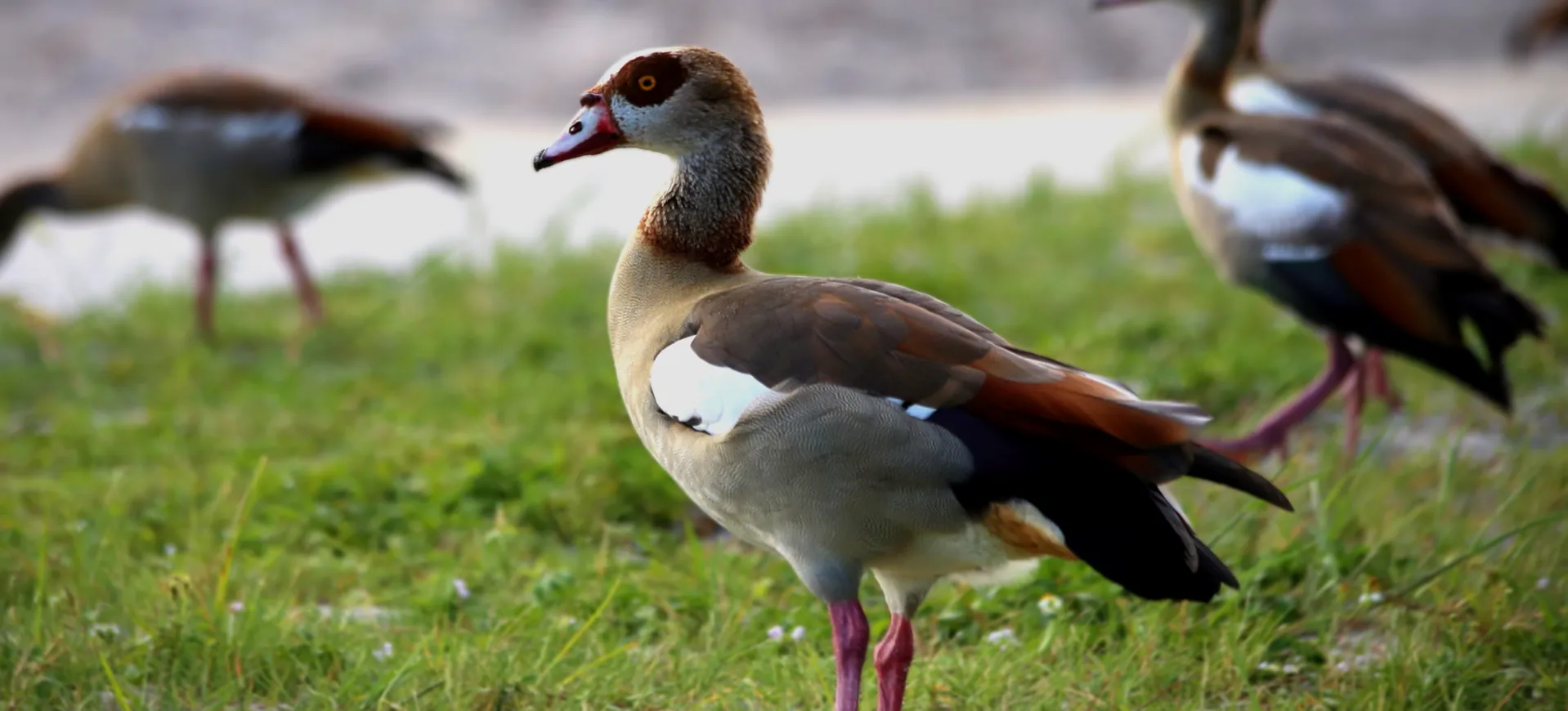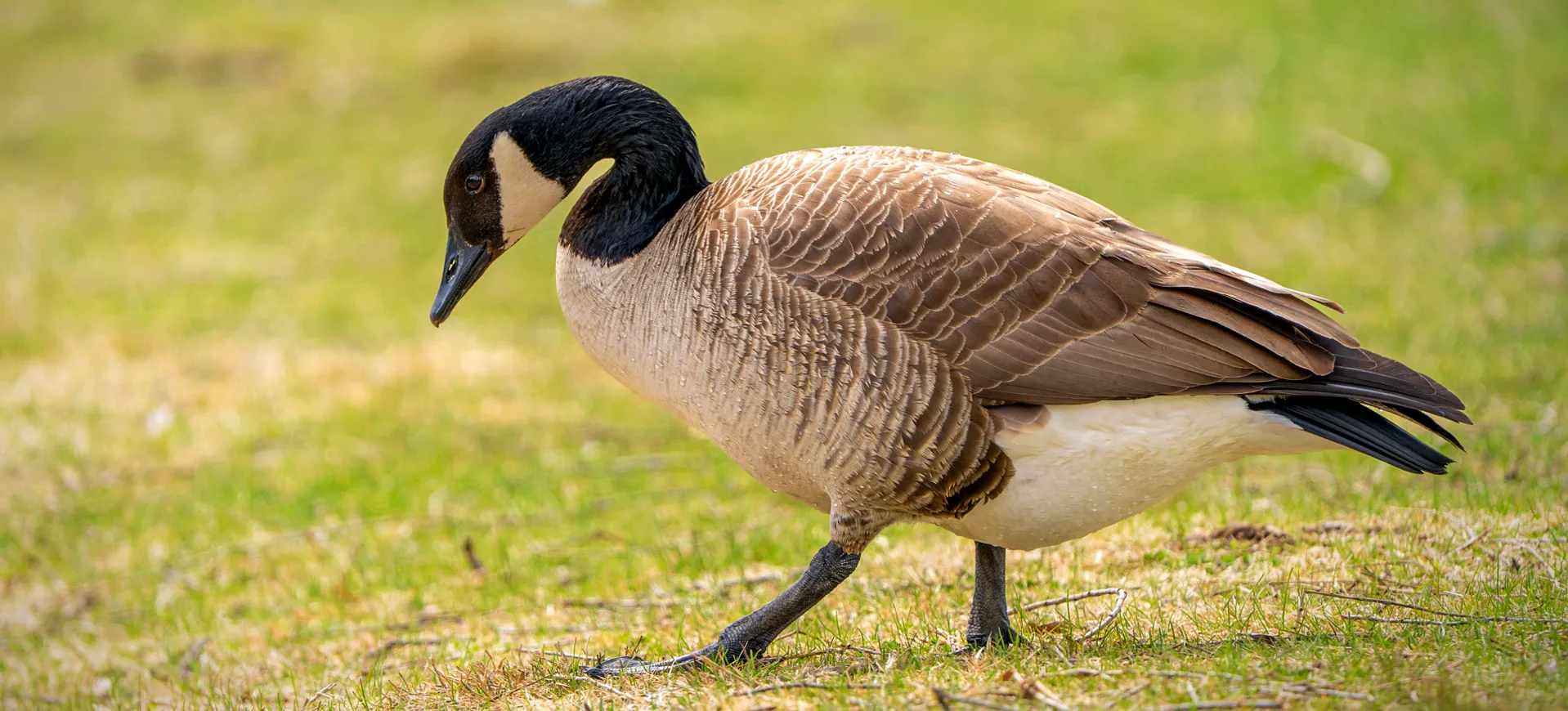Overview
The Red-breasted Merganser, scientifically known as Mergus serrator, is a distinctive and elegant diving duck. It is notable for its slender, serrated bill and spiky crest, which gives it a somewhat disheveled appearance. Adult males have a striking appearance with a dark green head, a white neck ring, and a reddish-brown breast, from which the species derives its name. Females and non-breeding males are more subdued in color, with gray bodies and reddish-brown heads.
Red-breasted Mergansers are fast fliers known for their low, skimming flight over water. They are commonly found in freshwater lakes and rivers and coastal marine environments, reflecting their adaptability to different aquatic habitats. These ducks are social birds, often seen in flocks, particularly during migration. Their diet mainly consists of fish, but they also consume crustaceans, insects, and other aquatic organisms.
During the breeding season, Red-breasted Mergansers exhibit interesting courtship displays, which include head-bobbing and ritualized preening. They nest near water, typically on the ground among vegetation. This species is known for its long migrations between breeding and wintering grounds, traversing considerable yearly distances.
Taxonomy
Kingdom
Phylum
Class
Order
Family
Genus
Species
Type
Physical Description:
Red-breasted Mergansers are medium-sized ducks, with males being slightly larger than females. They have long, slender bodies and necks, and their most distinctive feature is the thin, serrated bill adapted for catching fish. The male’s breeding plumage includes a dark green head, a white neck ring, and a reddish-brown breast. The back is black and white, and the wings are gray with white patches.
Females and non-breeding males have a more subdued coloration, with grayish bodies and a reddish-brown head with a shaggy crest. Both sexes have bright red eyes and orange feet. Red-breasted Mergansers are swift and direct in flight, with rapid wing beats. Their flight pattern and long, thin body shape are distinctive features that help identification.

Lifespan: Wild: ~7 Years || Captivity: ~9 Years

Weight: Male: 2.1-3.5 lbs (0.95-1.6 kg) || Female: 1.8-3.1 lbs (0.82-1.4 kg)

Length: Male & Female: 20-25 inches (51-64 cm)

Wingspan: Male & Female: 30-34 inches (76-86 cm)

Top Speed: 50 mph (80 km/h) in flight
Characteristic:
Native Habitat:
Red-breasted Mergansers inhabit a variety of aquatic environments, both freshwater and marine. Their breeding habitat includes lakes, rivers, and coastal marshes in the northern regions. They prefer areas with clear water and abundant fish populations. During the non-breeding season, they are commonly found in coastal marine environments, estuaries, and large lakes.
These ducks are well-adapted to cold climates and are typically found in northern latitudes. They can withstand icy water conditions, thanks partly to their dense plumage and oily feathers, which provide insulation and waterproofing.
Climate Zones:
Biogeographical Realms:
Continents:
Countries:
Diet:
Diet & Feeding Habits:
Red-breasted Mergansers are piscivorous, specializing in catching small fish. They are adept divers, using their serrated bills to grasp slippery prey. Their diet mainly consists of fish, but they also consume crustaceans, mollusks, insects, and occasionally small amphibians and plants. They typically forage in shallow waters, diving and swimming underwater to catch prey.
These ducks often forage in groups, which can increase their efficiency in catching fish. Their foraging behavior is energetic, involving rapid diving and pursuit of prey underwater. They can have considerable depths and stay merged for up to two minutes while hunting.
Mating Behavior:
Mating Description:
Red-breasted Mergansers are monogamous, and pairs form during the winter months before arriving at the breeding grounds. Their courtship displays are elaborate, involving head-bobbing and crest-raising by the males. These displays play a crucial role in pair formation and maintaining the bond.
Nesting usually occurs near the water’s edge, often on islands or along lake shores in northern regions. The female builds a nest in a sheltered location, such as under bushes or tall grass. She lays 6-12 eggs, which she incubates for about a month. Both parents initially care for the chicks, but the male often leaves before they fledge.
Reproduction Season:
Birth Type:
Pregnancy Duration:
Female Name:
Male Name:
Baby Name:
Social Structure Description:
Red-breasted Mergansers are social birds, often seen in flocks, especially during migration and in their wintering grounds. They form loose groups while foraging and resting. During the breeding season, they are more territorial and are usually seen in pairs or small family groups.
Their social interactions include a variety of vocalizations and displays used for communication and establishing social bonds. Group living protects these birds from predators and enhances foraging efficiency.
Groups:
Conservation Status:
Population Trend:
The global population of Red-breasted Mergansers is considered stable, with no immediate threats leading to a significant decline. They have a wide distribution and are adaptable to various aquatic environments. However, local populations may be affected by environmental changes, pollution, and habitat destruction.
Conservation efforts focus on maintaining and protecting important habitats, particularly breeding and wintering areas. Monitoring and research are ongoing to better understand their population dynamics and the impacts of environmental changes.
Population Threats:
The primary threats to Red-breasted Mergansers include habitat loss and degradation, particularly in breeding and wintering areas. Pollution, including oil spills and chemical contaminants, can impact their food supply and health. Climate change poses a long-term threat by potentially altering their habitats and affecting food availability.
In some areas, human activities and recreational watercraft disturbance can impact their breeding success and foraging behavior. Predating eggs and chicks by mammals, birds, and other predators is a natural threat.
Conservation Efforts:
Conservation efforts for Red-breasted Mergansers include protecting and managing important habitats, such as coastal areas, lakes, and rivers. Efforts to reduce pollution and disturbance in these areas are crucial for their survival. Legal protections, where applicable, help safeguard these birds from overharvesting and exploitation.
Research and monitoring programs help understand their ecology, population trends, and the effectiveness of conservation strategies. Public education and awareness campaigns are also important in promoting the conservation of this species.
Additional Resources:
Fun Facts
- Red-breasted Mergansers are among the fastest flying ducks, reaching up to 60 mph.
- They have a serrated edge on their bill, which helps them grasp slippery fish.
- These ducks are excellent divers who can go deep underwater searching for prey.
- The male Red-breasted Merganser’s breeding plumage is especially striking, with bold contrasts and bright colors.
- They are known for their noisy, raspy calls, particularly during the breeding season.
- Red-breasted Mergansers can be found in coastal waters as far north as the Arctic Circle during breeding season.
- Their long, thin bodies and distinctive plumage make them one of the most easily identifiable duck species.
- The chicks are precocial and can swim and dive shortly after hatching.
- Red-breasted Mergansers are sometimes called “sawbills” due to their serrated bill edges.
- In winter, they often form large flocks and can be seen in bays, estuaries, and along coastlines.






















































































